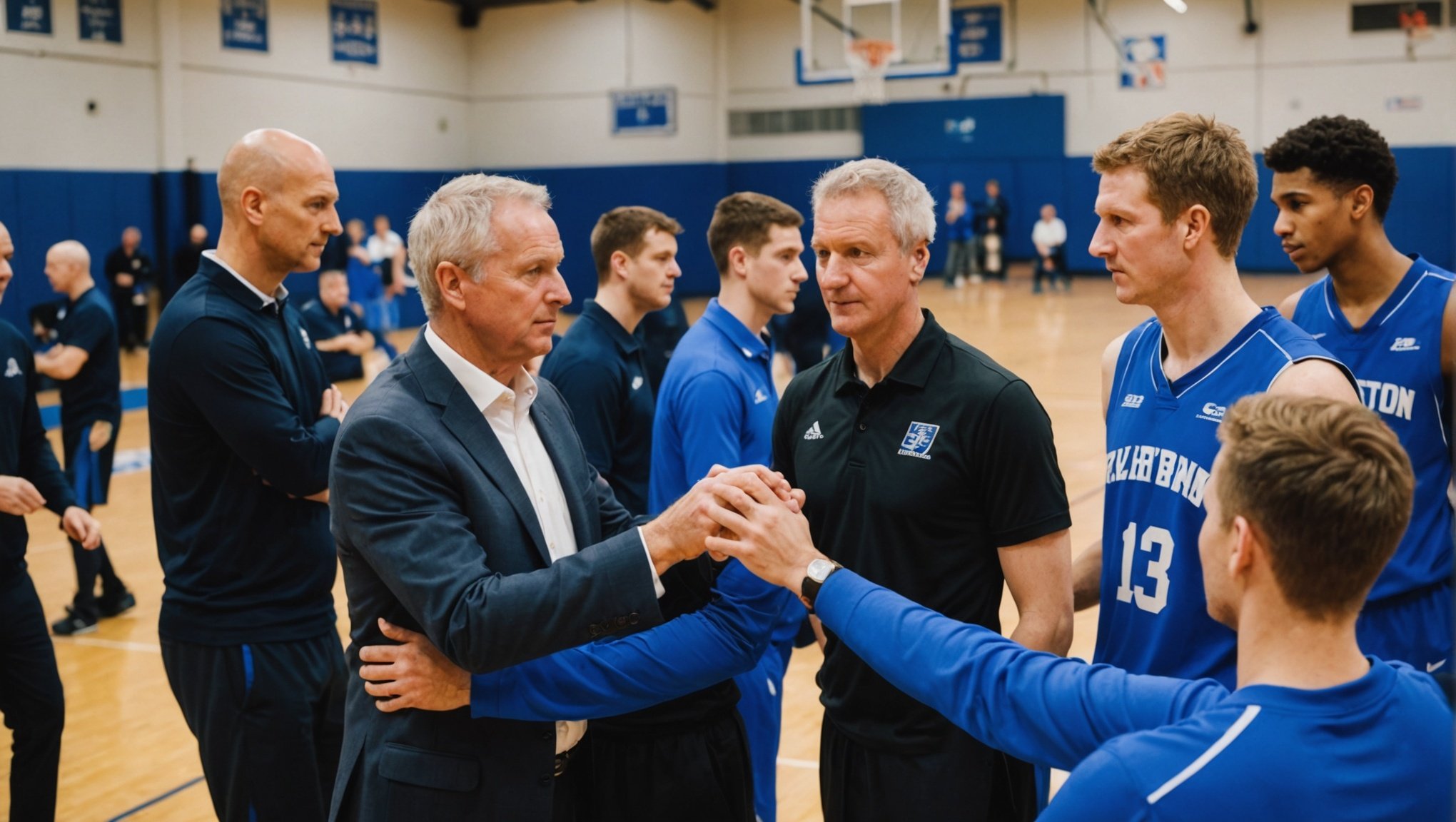Navigating Multi-Age Team Dynamics: Strategies for UK Basketball Coaches
Managing a multi-age team in basketball can be a complex and rewarding challenge for coaches. It requires a delicate balance between fostering competition, promoting collaboration, and ensuring the development of all players, regardless of their age or experience level. Here, we will delve into the strategies that UK basketball coaches can employ to successfully navigate these dynamics.
Understanding the Challenges of Multi-Age Teams
Multi-age teams present a unique set of challenges. Coaches must contend with varying levels of maturity, skill, and physical development among players. For instance, younger players may need more guidance and support, while older players might require more advanced training and leadership roles.
Also read : Building Resilience: Strategies for UK Basketball Coaches to Support Players Through Back-to-Back Losses
“Striking a balance between competition and collaboration is crucial in multi-age teams,” notes an article on mastering multi-age teams for UK basketball coaches. This balance is essential to motivate players and create a cohesive team environment.
Encouraging Friendly Competition
Friendly competition is a powerful motivator in any team setting. Here are some strategies to encourage healthy competition within a multi-age team:
Also to see : Unlocking Superior On-Court Decision-Making: Strategies for UK Basketball Players
- Age-Specific Drills: Design drills that cater to different age groups. For younger players, focus on fundamental skills like dribbling and shooting, while older players can engage in more complex drills that simulate game scenarios.
- Intra-Team Tournaments: Organize mini tournaments within the team where players of different ages can compete against each other. This not only fosters competition but also promotes teamwork and camaraderie.
- Player vs. Player Challenges: Pair players of different ages for one-on-one challenges. This can help younger players learn from their older teammates and build confidence.
Fostering Collaboration and Teamwork
Collaboration is the backbone of any successful team. Here’s how coaches can foster teamwork in a multi-age setting:
- Mentorship Programs: Pair older, more experienced players with younger teammates. This mentorship can help younger players learn new skills and gain valuable insights from their more seasoned counterparts.
- Team-Building Activities: Organize activities outside of regular training sessions that encourage bonding. This could include team outings, community service projects, or social events.
- Shared Goals: Set team goals that everyone can work towards. This helps to create a sense of unity and shared purpose, regardless of age differences.
Developing Players Across Different Age Groups
Player development is a critical aspect of coaching any basketball team. Here are some strategies to ensure that players of all ages are developing their skills:
Training Programs Tailored to Age Groups
| Age Group | Focus Areas | Training Methods |
|---|---|---|
| Younger Players | Fundamental skills (dribbling, shooting, passing) | Drills focusing on basic techniques, small-sided games |
| Older Players | Advanced skills (ball handling under pressure, complex shooting techniques) | Scenario-based drills, strength and conditioning training |
| All Players | Teamwork and strategy | Team drills, scrimmages, video analysis |
Leveraging Technology and Analytics
Technology can play a significant role in player development. Platforms like NBN23, which offer real-time data and analytics, can help coaches tailor training programs to individual players’ needs.
“Basketball Wales is moving into a new phase of performance basketball, and working alongside the BBF to host the combine allows us to showcase our ability to be a leading nation for performance environments,” said Danny Williams, Programme Performance Manager for Basketball Wales. This highlights the importance of leveraging advanced tools to enhance player development.
Building Strong Coach-Athlete Relationships
The relationship between a coach and an athlete is pivotal in any sports setting. Here are some strategies to build strong, supportive relationships:
- Open Communication: Encourage open and honest communication between coaches and players. This helps in understanding individual needs and concerns.
- Personalized Feedback: Provide feedback that is specific to each player’s development needs. This can be particularly effective when combined with data analytics.
- Supportive Environment: Foster an environment where players feel supported and valued. This includes providing emotional support and recognizing individual achievements.
“Coaches who facilitate positive youth development through sport often use strategies such as promoting positive relationships, providing emotional support, and fostering a sense of belonging,” according to research on strategies for helping coaches facilitate positive youth development.
Managing Different Levels of Maturity and Experience
Managing different levels of maturity and experience is crucial in a multi-age team. Here are some tips:
- Leadership Roles: Assign leadership roles to older, more experienced players. This helps in distributing responsibilities and fostering a sense of ownership.
- Role Modeling: Encourage older players to model good behavior and sportsmanship. Younger players often look up to their older teammates and can learn valuable life skills from them.
- Flexible Coaching Styles: Be flexible in your coaching style to accommodate different learning styles and maturity levels. Some players may respond better to a more structured approach, while others may thrive in a more relaxed environment.
Practical Insights and Actionable Advice
Here are some practical insights and actionable advice for UK basketball coaches navigating multi-age team dynamics:
Building a Positive Team Culture
- Team Meetings: Hold regular team meetings to discuss goals, strategies, and any issues that may arise.
- Player Input: Encourage players to provide input on team decisions and strategies. This helps in building a sense of ownership and inclusivity.
- Celebrating Successes: Celebrate the successes of all players, regardless of their age or role in the team. This fosters a positive and supportive team culture.
Leveraging External Resources
- Workshops and Clinics: Attend coaching workshops and clinics to gain new insights and strategies for managing multi-age teams.
- Networking: Network with other coaches to share experiences and best practices.
- Online Resources: Utilize online resources such as coaching forums, blogs, and research articles to stay updated on the latest coaching techniques.
Navigating the dynamics of a multi-age basketball team is a complex but rewarding task. By encouraging friendly competition, fostering collaboration, developing players across different age groups, and building strong coach-athlete relationships, coaches can create a cohesive and high-performing team.
As Mark Pope, the head coach of the Kentucky Wildcats, emphasizes, “His coaching also focuses on solid defensive strategies, which he believes are vital for winning games. Pope’s approach combines traditional coaching methods with modern basketball tactics, making his teams versatile and competitive”.
By adopting these strategies and staying committed to the development of all players, UK basketball coaches can build successful teams that thrive both on and off the court.






